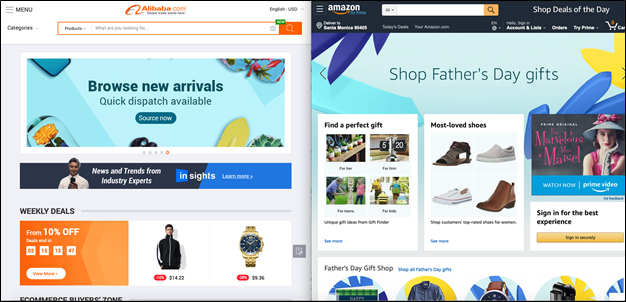How B2B Buyers Work Now
Millennials, teamwork, and Amazon have changed the game.
Over a long lunch that includes gin and cigars, a salesman talks a gray-haired factory boss into buying 100,000 widgets. That's a stereotypical image for doing business in the old days.
Whether or not that image ever reflected reality, it sure doesn't now. Today's B2B purchasing process involves factors that would amaze yesterday's buyers and sellers.
1. Teams make buying decisions
When we survey trade show attendees, we find that roughly four out of five recommend, specify, or make buying decisions. The reason: teamwork.
A 2019 survey of more than 700 B2B buyers by the business technology website TrustRadius says, “95% of [B2B] purchases were collaborative. Only 5% of purchases were made by a single buyer.” TrustRadius CEO Vinay Bhagat says that companies are “making buying more of a group sport.”
And the groups are diverse. “When surveyed, 75% of customers agree or strongly agree that their purchase involved people from a wide variety of roles, teams, and locations,” says Brent Adamson, marketing vice president at the business consultancy Gartner.
Getting a diverse group to agree on what to buy can be a slow process. Studies by TrustRadius, the sales software company Showpad, and Demand Gen Report (a publication for B2B marketers) say that a purchase decision can take at least three months.
2. Millennials dominate the buying teams
TrustRadius CEO Vinay Bhagat says, “59% of software buyers are millennials, according to our recent B2B Disconnect research. Of those, one in three was the lead buyer.”
Millennials, Bhagat adds, “are less likely to rely on vendor marketing and sales reps than older buyers.” Instead, millennials and other buyers trust web research. “Today, most B2B buyers start the decision-making process online,” says a recent Boston Consulting Group study of 1,200 B2B buyers. “They remain online through much of their journey, comparing prices and product performance.”
Fortunately, you control one of their favorite online destinations. “When you ask customers where are they most likely to go in digital,” Adamson says, “it is the supplier's own website.”
3. A B2B website should look like a B2C site
According to Adamson, most companies use their websites to talk about themselves, not help buyers make purchases. But millennials and other buyers are used to B2C sites like Amazon, which emphasize buying and make it easy.
The most successful B2B website is probably Alibaba.com, a marketplace connecting businesses — both buyers and sellers — worldwide. Alibaba looks like Amazon: Easy to read, thanks to plenty of open space and very few words, and easy to use, with a search bar conveniently located at the top center of the screen.

B2B website experts say that a good site should be simple to navigate and mobile-friendly. It should include call-to-action buttons like “Click here to purchase” and online ordering so that buyers can buy with just a few clicks.
A B2B website should also have rich, deep content. Demand Gen Report notes that about two-thirds of B2B executives want vendor sites to offer case studies, white papers, and other useful data. (Note that Alibaba's site includes “News and Trends from Industry Experts.”)
Now what?
Despite the new developments, at least one thing hasn't changed.
• Gartner says that buyers doing product research are open to receiving it in person, not just online.
• Boston Consulting notes that after researching online, B2B buyers often buy offline.
• A study by B2B software company TimeTrade says, “88% of B2B buyers, on average, say it's important to have live meetings or appointments with a company they may buy from... Buyers report that when companies offer the ability to schedule live appointments — either in-person or virtual — easing the buying process, their relationship with that company improves.”
In other words, B2B buying has taken on new features, but old-fashioned human contact never goes completely out of style.

